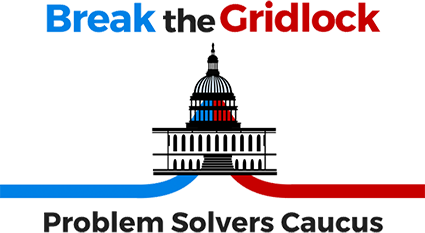Originally published on Forbes.com.
The Democratic House wanted another batch of stimulus checks, but the Republican Senate was not having it. Now there is a bipartisan proposal that calls for at least one more round of stimulus checks and another round in March if things don’t improve.
Legislation Up Till Now
Reviewing the bidding of major Covid-19 relief bills, there was the CARES Act passed at the end of March which, inter alia, gave us the Paycheck Protection Program, enhanced unemployment benefits, and stimulus checks.
The Democratic House then passed the HEROES Act in May, which died in the Senate. HEROES included another round of stimulus checks.
The Senate was able to muster a majority for the Delivering Immediate Relief to America’s Families, Schools and Small Businesses Act but not the sixty votes required. “Delivering” delivered on Republican priorities like tort reform and aid to private schools, but had nothing on stimulus checks.
The Problem Solvers
Now we hear from the bipartisan Problem Solvers Caucus. I would think that we would want everybody in Congress to belong to this, but it actually consists of just 50 members of the House – 25 Republicans and 25 Democrats.
Beginning in 2017, the Problem Solvers Caucus became an independent member-driven group in Congress, comprised of representatives from across the country – equally divided between Democrats and Republicans – committed to finding common ground on many of the key issues facing the nation. Co-Chaired by Rep. Josh Gottheimer (D-NJ) and Rep. Tom Reed (R-NY), the Caucus’ aim is to create a durable bloc that champions ideas that appeal to a broad spectrum of the American people. It is a group united in the idea that there are commonsense solutions to many of the country’s toughest challenges. Only when we work together as Americans can we successfully break through the gridlock of today’s politics.
A Framework
The PSC has put out a March To Common Ground Bipartisan Covid Relief Framework. It is a framework, rather than proposed legislation so the devilish details are glossed over. On the plus side, it makes an easier read than the 285-page “skinny” Senate bill.
It starts with $100 billion of additional health care spending – testing and contact tracing, healthcare provider support, forgiveness of Medicare loans to providers.
$11 billion would go to enhance WIC and SNAP through March and July 2o21 respectively. (WIC is a nutrition program for Women, Infants, and Children. SNAP is commonly called “food stamps”).
There is $25 billion for rental assistance, rent stabilization and an eviction moratorium through January 2021 and student loan forbearance through December 31, 2020.
The unemployment provision is $450 per week for an eight-week transition period. That is followed up by up to $600 per week but not to exceed 100% of previous wage for thirteen weeks through January 2021.
They would re-appropriate $145 billion of PPP money and add $95 billion in new money with simplified forgiveness and $50 billion for the Employee Retention Credit. And there is $145 billion for schools and child care. There is half a trillion in aid to state, local, territorial and tribal governments and $400 million for election security.
They also address expanding broadband to under-served communities, modify statutes to get a better census count, and help to the Post Office. Another part of the framework addresses bipartisan sensibilities by combining enhanced liability protection for entities which follow enhanced OSHA guidelines with robust enforcement of worker safety.
And On Stimulus Payments
The framework calls for $280 billion for $1,200 stimulus checks plus $500 per child plus dependent adults. The dependent adult part has (retroactive) next to it and I have not figured out exactly what that means.
What If
The bill coming out of the framework would include automatic reducers and boosters depending on how things go based on covid hospitalization metrics and vaccine progress. If things get better more quickly PPP, state and local aid and renters assistance could be carved back by as much as $200 billion.
Then there are the boosters – a 3-month extension on the unemployment benefits starting in February 2021 and another $280 billion for automatic stimulus checks in March 2021, if things are not so good.
Stimulus Seems Popular
As you might expect the bipartisan problem solvers seem to be steering a middle course between Republican and Democratic extremes. There is no reinstatement of the state and local tax deduction which the Democrats want. And no explicit aid to private schools like the Republicans want. Liability protection is balanced with enhanced workplace safety enforcement. And unemployment is increased but limited to prior earnings.
When it comes to stimulus checks, though, the bipartisan problem solvers are doubling down with an immediate second check and an automatic third check in March if things are not better.
Will Anything Happen?
Whether anything happens remains to be seen. The other 485 people in the House and the Senate seem to be playing chicken figuring they can blame the other guys for nothing getting done.
































































































Your commentary on the NYT article being “disappointing” is not disappointing; it is extraordinary, both in insight and wisdom, Peter.
Reflecting on the morass of supposed facts, I only have one word to describe the overall effort: anal.
I went through Kamela Harris’ family tax return for 2019. Now, that was the real shocker. It’s the real gift to the Trump campaign.
All the best to you. I am so glad to have found you on these pages!
George M. Heiner, Jr
Thanks very nice blog!
Hi! This is my first comment here so I just wanted to give a quick shout out and tell you I really enjoy reading through your blog
posts. Can you suggest any other blogs/websites/forums that go
over the same subjects? Thanks!